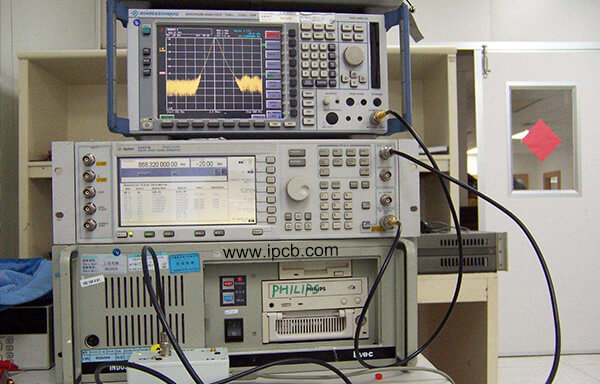1.RF circuit layout principle
When designing an RF circuit layout, the following general principles must be given priority:
(1)The high-power RF amplifier(HPA)and the low-noise amplifier(LNA)should be isolated as much as possible. In short, high-power RF transmitting circuits should be kept away from low-power RF receiving circuits;
(2)The high-power area of the PCB board should have at least an entire area, preferably without vias. Of course, the larger the copper foil area, the better;
(3)Decoupling of circuits and power supplies is also important;
(4)RF output usually needs to be far away from RF input;
(5)Sensitive analog signals should be kept as far away from high-speed digital signals and radio frequency signals as possible;

RF circuit layout
2. Physical partition, electrical partition, design partition
Can be broken down into physical partitions and electrical partitions. Physical zoning mainly involves the layout, positioning and shielding of components; electrical zoning can be further divided into power distribution, RF wiring, sensitive circuits, and signals and grounding.
3. Several aspects should be paid attention to in the design of mobile phone PCB boards.
Handling of power supply and ground wires:
Even if the wiring throughout the PCB board is done well, interference caused by poorly considered power and ground wires can degrade the performance of the product and sometimes even affect the success rate of the product.
Therefore, the wiring of electrical and ground wires should be taken seriously to minimize the noise interference generated by electrical and ground wires to ensure product quality.
For every engineer who is engaged in the design of electronic products, they understand the cause of noise between the ground wire and the power wire.
4. High-frequency PCB design skills and methods
(1)A 45°angle should be used at the corners of transmission lines to reduce return loss.
(2)High-performance insulated circuit boards with strictly controlled insulation constant values according to grade should be used. This approach facilitates efficient management of electromagnetic fields between the insulating material and adjacent wiring.
(3)PCB design specifications need to be improved for high-precision etching. Consider specifying a total trace width tolerance of +/- 0.0007 inches,managing undercuts and cross-sections of trace shapes,and specifying plating conditions for trace sidewalls. Overall management of wiring(conductor)geometry and coating surfaces is important to address skin effect issues associated with microwave frequencies and achieve these specifications.
(4)The protruding leads have tapped inductance, avoid using components with leads. In high frequency environments, surface mount components are preferred.
(5)For signal vias,avoid using via processing(PTH)on sensitive boards because this process will cause lead inductance at the vias.
(6)Provide a rich ground layer. These ground planes should be connected through molded holes to prevent 3D electromagnetic fields from affecting the board.
(7)Choose electroless nickel plating or immersion gold plating process, do not use HASL method for plating.
(8)The solder mask prevents solder paste from flowing. However, due to thickness uncertainty and unknown insulation properties, the entire board surface is covered by the solder mask, which will lead to huge changes in electromagnetic energy in microstrip designs. Typically, weld dams are used as electromagnetic fields for solder masks.
In this case, we manage the transition from microstrip to coaxial cable. In coaxial cable, the ground plane is circular and evenly spaced. In microstrip, the ground plane is below the active lines.
This introduces some edge effects that need to be understood, anticipated and accounted for in the design. Of course, this mismatch also results in return loss, which must be minimized to avoid noise and signal interference.
5.EMC design
Electromagnetic compatibility refers to the ability of electronic equipment to work harmoniously and effectively in various electromagnetic environments.
The purpose of electromagnetic equipment design is to reduce electromagnetic interference to other electronic equipment.